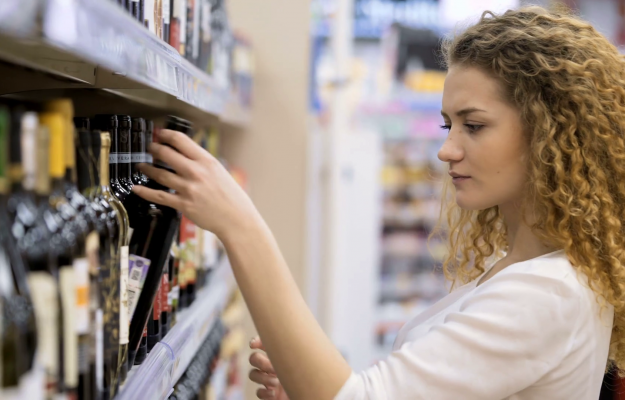A focus on the trends and innovations that have changed and characterized the global wine trade over the last two years, from import to shelf, and on expectations for the next two years, at the heart of Sopexa’s “Wine Trade Monitor”, which collected the opinions of 1,044 wine professionals - importers, wholesalers, retailers and e-commerce specialists - operating in the most important markets in terms of imports and consumption, namely Belgium, China, Germany, Japan, UK, USA, Canada and Holland. Firstly, the number of countries of origin in importers' portfolios increased between 2019 and 2021, from 8 to 8.6. In Japan, on average, wine is imported from 11 different countries, in China from 5.2 and in Belgium from 6.4. Ninety percent of respondents import wine from France, 82% from Italy and 76% from Spain, the three leading wine-producing countries on world markets. Significant growth was recorded in China and Japan for wines from Italy, Spain and Germany, while wines from Portugal became the fifth most imported from the countries analyzed by the Wine Trade Monitor. Australia, on the other hand, lost ground, dropping from 53% of responses in 2019 to 48% in 2021, the result of the collapse in shipments to China, where Australian wines are present in 13% fewer portfolios than in 2019.
Generally speaking, operators are more optimistic, because after Trump's tariffs and the long Brexit process, despite the pandemic, international wine trade is back on track, so much so that professionals in Germany, Canada and the Netherlands are the most optimistic about the possibility of growth in the next two years, closely followed by colleagues in Belgium and the USA. More cautious, for obvious reasons, are British operators, who are more positive about 2019, but 63% of them are convinced that the wine trade will not grow in the next two years. 53% of traders believe that French wines will benefit from any growth, followed by Italian wines (49%) and Spanish wines (37%). In China, on the other hand, a good half of the responses indicated Chile as the producer destined to grow the most, at least in terms of volumes, thus replacing Australia. There are also positive prospects for Italian wines in Canada and Holland, while Spanish wines have high hopes of growth in Belgium and the USA, and in Germany it is domestic production that “cashes in” on 70% of merchants’ indications.
In terms of categories, 45% of the wine trade, in all markets, indicate organic wines as those destined for the greatest growth, an aspect that has now surpassed regional origin in appeal. On the other hand, the appeal of rosé does not seem to be waning, as it is now the third best performing category in the forecasts of wine specialists in Belgium, China, Germany, Japan, UK, USA, Canada and Holland, so much so that 19% of them put it among the two best performing categories, especially in Great Britain. Premium wines also performed well, albeit with a certain disparity from country to country. In Canada and Japan, on the other hand, orange wines and Pet Nat are starting to carve out their own niche, while in the USA, aromatized wines are beginning to do so.
The regions to watch are practically all French and are destined to experience a certain dynamism over the next two years: among whites, the top are Languedoc, Loire and Burgundy, but in Germany local production (Rheinhessen, Pfalz and Baden) is winning, and in the USA Portuguese Vinho Verde is gaining ground, while Marlborough (New Zealand) is losing ground, and is out of the top 3 everywhere (except the USA and China). For red wines, the podium, driven by Asian markets, in the expectations of wine trade professionals, is occupied by Bordeaux, Languedoc and Côtes du Rhône. Holland and Germany reward the reds of Puglia and Piedmont, Canada those of Tuscany and Douro (Portugal), with China betting heavily on Burgundy and Aconcagua (Chile) in addition to Bordeaux. Among rosés, the leading regions will be Provence (36%) and Languedoc, with Italy (as a whole) in third place. Competition among sparkling wines is fiercer, with Champagne at the top, followed by Prosecco, Cava and Crémant.
In addition to products, sales channels are also undergoing changes, with the clear growth of the online channel, which is still worth less than 10% of trade according to wine professionals, but with a major exploit in 2020 (due to the pandemic and subsequent lockdowns) particularly in Europe, the United States, Canada and Great Britain, to the extent that 72% of traders now have an e-commerce site. The trend remains stable in Asia, where online trading has been established well before the pandemic, but in general 42% of players expect further growth in the channel over the next two years. The growth forecast for the classic 75 cl bottle format is also interesting, with the can set to win market share in Canada, the USA and Great Britain and the screw cap gaining ground everywhere (with the exception of China). Finally, in terms of image and reputation, France remains the producer country perceived as the best by 52% of respondents, followed by Italy (18%) and Germany (5%). French wines are considered to be at the top as wines for special occasions (70%), in the category of organic wines (48%), with respect to sustainability (46%) and communication (36%), while Italian wines win in the preferences of younger people, and Spanish wines in terms of quality/price ratio.
Copyright © 2000/2025
Contatti: info@winenews.it
Seguici anche su Twitter: @WineNewsIt
Seguici anche su Facebook: @winenewsit
Questo articolo è tratto dall'archivio di WineNews - Tutti i diritti riservati - Copyright © 2000/2025








































































































































































































